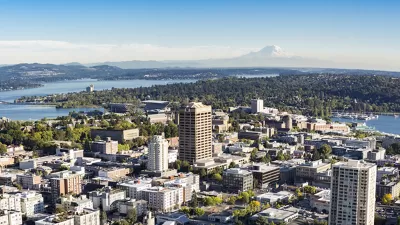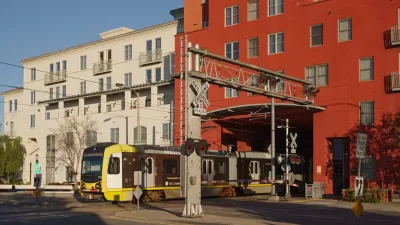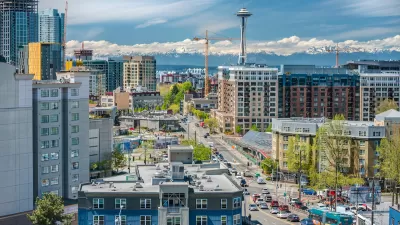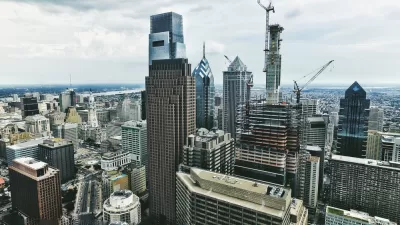Members of the Sierra Club and the Young Democrats of University of Washington come together to advocate more dense zoning in one of Seattle's most transit accessible neighborhoods.

The city of Seattle will be soon decide whether or not to upzone the U district. In an editorial in The Stranger, Jesse Piedfort and Noah An of the Sierra Club and the Young Democrats of University of Washington, respectively argue that the zoning change is sorely needed. "Seattle’s Office of Sustainability and Environment reported that the city is not on pace to meet its climate goals for the year 2030," they point out. Saying that the zoning change is a prime opportunity to address the issue noting, "The U District is an ideal place to build more housing for people. The neighborhood already has excellent bus connections and will, by 2021, have two new light-rail stations."
While the two organizations represent different people with a diverse set of interests, Piedfort and An emphasize their agreement on this issue. "The Sierra Club and the Young Democrats at the University of Washington agree that climate issues and affordability are closely linked—and so are their solutions. We need more housing, and for reasons of environmental and economic justice, that housing ought to be as close to transit as possible." They continue by suggesting that the advantages of the development aren't limited to environmental concerns, "At a time when we are dealing with a housing crisis, anything less than the full rezone recommendation is insufficient to address the great need for housing in one of Seattle’s most dynamic neighborhoods."
FULL STORY: Guest Editorial: Now More than Ever, Seattle Must Welcome Upzones

Alabama: Trump Terminates Settlements for Black Communities Harmed By Raw Sewage
Trump deemed the landmark civil rights agreement “illegal DEI and environmental justice policy.”

Planetizen Federal Action Tracker
A weekly monitor of how Trump’s orders and actions are impacting planners and planning in America.

The 120 Year Old Tiny Home Villages That Sheltered San Francisco’s Earthquake Refugees
More than a century ago, San Francisco mobilized to house thousands of residents displaced by the 1906 earthquake. Could their strategy offer a model for the present?

Indy Neighborhood Group Builds Temporary Multi-Use Path
Community members, aided in part by funding from the city, repurposed a vehicle lane to create a protected bike and pedestrian path for the summer season.

Congestion Pricing Drops Holland Tunnel Delays by 65 Percent
New York City’s contentious tolling program has yielded improved traffic and roughly $100 million in revenue for the MTA.

In Both Crashes and Crime, Public Transportation is Far Safer than Driving
Contrary to popular assumptions, public transportation has far lower crash and crime rates than automobile travel. For safer communities, improve and encourage transit travel.
Urban Design for Planners 1: Software Tools
This six-course series explores essential urban design concepts using open source software and equips planners with the tools they need to participate fully in the urban design process.
Planning for Universal Design
Learn the tools for implementing Universal Design in planning regulations.
Clanton & Associates, Inc.
Jessamine County Fiscal Court
Institute for Housing and Urban Development Studies (IHS)
City of Grandview
Harvard GSD Executive Education
Toledo-Lucas County Plan Commissions
Salt Lake City
NYU Wagner Graduate School of Public Service





























